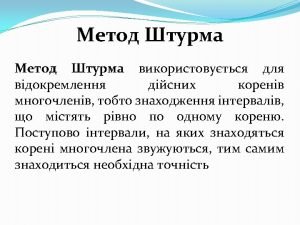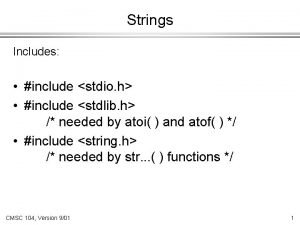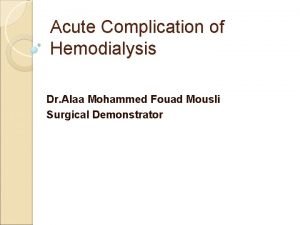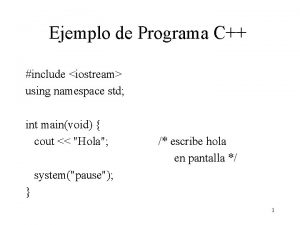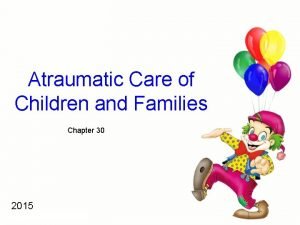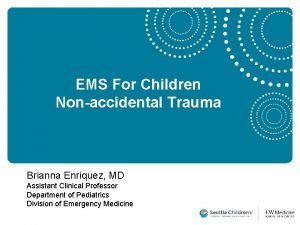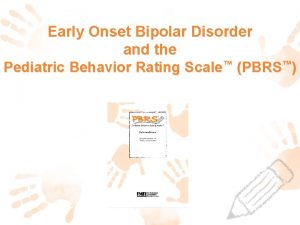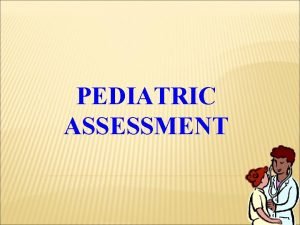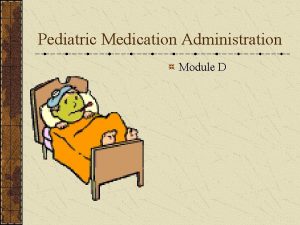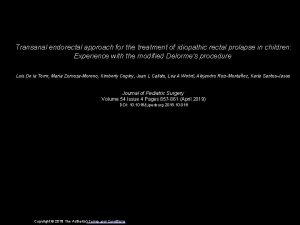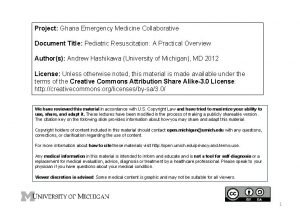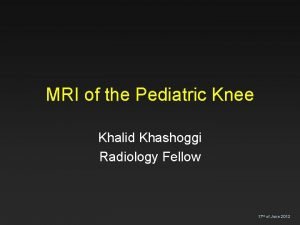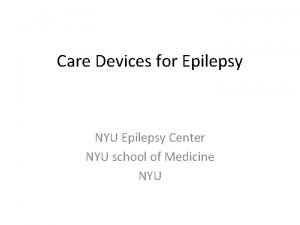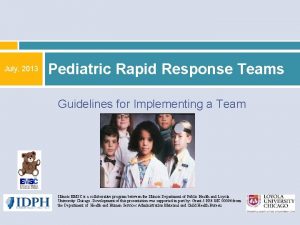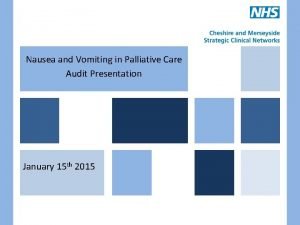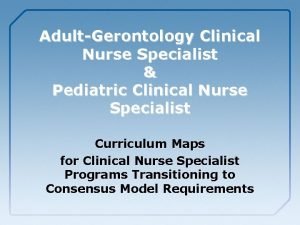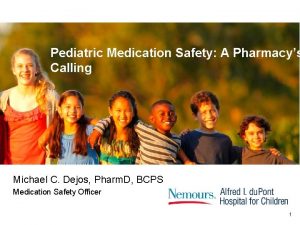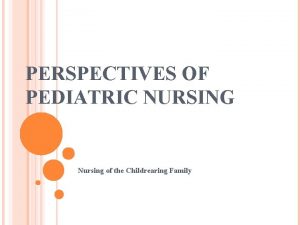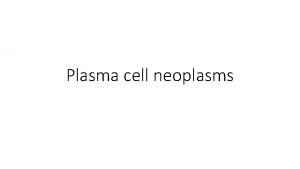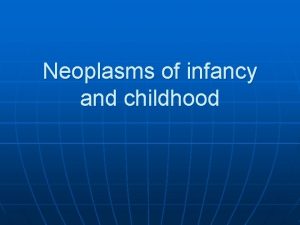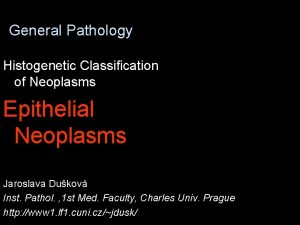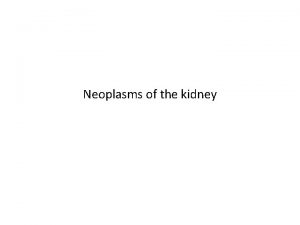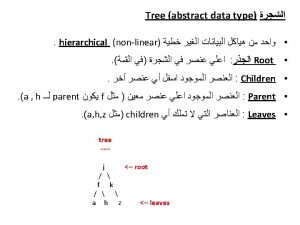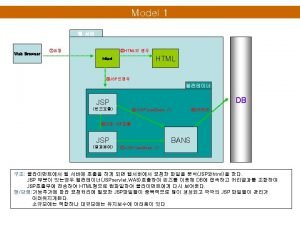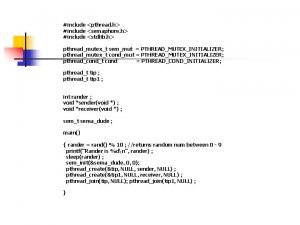Pediatric neoplasms Alaa Almaaiteh MD Pediatric neoplasms Include
























































- Slides: 56

Pediatric neoplasms Ala’a Almaaiteh, MD

Pediatric neoplasms • Include malignant tumors “cancers” and nonmalignant tumors • Pediatric cancers are uncommon • Less than 1% of all newly diagnosed cancer cases in US • Differs from adult malignancies in prognosis and distribution by histology and tumor site • The most common pediatric malignancy is acute leukemia, with survival rate up to 90%


Leukemias

The leukemias • A group of malignant diseases in which genetic abnormalities in a hematopoietic cells give rise to an unregulated clonal proliferation of cells. • Accounts for 31% of pediatric malignancies • Acute lymphoblastic leukemia (ALL) accounts for 77% of cases • Acute myelogenous leukemia (AML) 11% • Chronic myelogenous leukemia (CML) 2 -3% • Juvenile myelomonocytic leukemia 1 -2%


ALL • Incidence: 3 -4/100, 000 • Peak age group 2 -3 years • Male more than females • Etiology: unknown, several genetic and environmental factors: Chemical, Drugs, Ionizing Radiation. • More common with certain chromosomal abnormalities, e. g. , down syndrome, bloom syndrome, ataxia-telangectesia, and fanconi anemia

Classification (immunophenotyping) 1. Pre-B ALL 85% 2. T-Cell ALL 15% 3. Mature B (Burkitt) ALL 1% • Many chromosomal abnormalities in most ALL cases are used as diagnostic and prognostic factors


Good prognostic factors 1. Age : 1 -10 year. 2. WBC: < 50, 000 3. Chrom. Abnormalities: presence of TEL/AML 1 gene. Philadelphianegative, hyperdiploidy, absence of MLL rearrangement 4. Immunophenotype: B-cell ALL 5. No CNS involvement 6. Early Response to Chemotherapy

Clinical Manifestations • Initial symptoms are nonspecific and relatively brief: • • Anorexia, fatigue, malaise, and irritability low-grade fever Sever bone or, less often, joint pain, particularly in the lower extremities history of an upper respiratory tract infection in the preceding 1 -2 mo • Later signs and symptoms of bone marrow failure • Organ infiltration cause lymphadenopathy, hepatosplenomegaly, testicular enlargement, or central nervous system (CNS) involvement • Respiratory distress may be due to severe anemia or mediastinal node comparison of the airways.

Physical examination findings • pallor, listlessness • purpuric and petechial skin lesions, or mucous membrane • lymphadenopathy, splenomegaly, or, less commonly, hepatomegaly. • In patients with bone pain, there may be exquisite tenderness over the bone • CNS involvement: papilledema • Testicular mass: rare • Respiratory distress: in T-cell with large anterior mediastinal mass

Diagnosis • CBC: most patients have sever anemia and thrombocytopenia. High WBC (not in all cases) • Blood film: peripheral blasts • bone marrow aspiration and biopsy, flow cytometry, cytogenetics, and molecular studies. • LP and CSF examination for blasts • CXR: mediastinal mass • High lactate dehydrogenase (LDH)

Differential Diagnosis • aplastic anemia (congenital or acquired) and myelofibrosis • Failure of a single cell line eg. e, transient erythroblastopenia of childhood, ITP, and congenital or acquired neutropenia. • Infectious mononucleosis in patients with acute onset of fever and lymphadenopathy and from rheumatoid arthritis in patients with fever, bone pain but often no tenderness, and joint swelling. • (AML) and other malignant diseases that invade the bone marrow

Treatment The single most important prognostic factor in ALL is the treatment 5 years survival rate > 80% Without effective therapy, the disease is fatal. Duration is 2. 0— 3. 0 years Treatment protocol according to risk stratification (low risk, intermediate vs high risk) • Several phases: Remission induction, consolidation and intensification, maintenance phase • Several chemotherapeutic agents are used in ALL treatment • • • Corticosteroids, vincristine, methotrexate (IT and IV), daunomycin • Mercaptopurine and oral methotreaxate oral

AML

Acute Myelogenous Leukemia

• Signs and symptoms are same as in ALL • High WBC count at presentation • M 3 may present with DIC • M 4 and M 5 may present with gingival infiltration • M 7 is most specific leukemia in Down syndrome • Carries worse prognosis than ALL • Treatment : Aggressive chemotherapy, Bone marrow transplant (for unfavorable prognosis)

CML

• Initial chronic phase in which malignant clone produces high WBC. Mild anemia and thrombocytosis • Splenomegaly • chronic phase lasts 3 -4 years and ends by “Blast crisis” which mimic ALL • 95% of CML cases have positive Philadelphia chromosome “t(9; 22)” resulting in a BCR-ABL fusion protein • Treatment: • hydroxyurea • Imatinib: specifically inhibts BCR-ABL production • BMT

Lymphoma

• Most common cancer in adolescents • Two major types: • Hodgkin disease • Non-Hodgkin lymphoma (NHL) • Unknown etiology, EBV plays causal role in both conditions • Hodgkin disease peaks in the adolescent/young adult. NHL increases with age. • NHL in childhood are diffuse, highly malignant • NHL has three histologic subtypes • NHL has association with immunodeficiency


Clinical manifestation • painless, firm lymphadenopathy usually the supraclavicular and cervical nodes • Mediastinal lymphadenopathy producing cough or shortness of breath • B symptoms: • Fever >38° C for 3 consecutive days • drenching night sweats • unintentional weight loss of 10% or more within 6 months • Burkitt lymphoma may present with abdominal mass or jaw mass

Diagnosis • Diagnosis is established by tissue biopsy • Pathologic hallmark of Hodgkin disease is the identification of Reed. Sternberg cells. • Chest x-ray assesses for a mediastinal mass • CT scan for staging • PET scan • Bone marrow aspiration • CBC and blood chemistry


Reed-Sternberg (RS) cell • resembling an "owl's eye" appearance

Mediastinal mass

differential diagnosis • leukemia, rhabdomyosarcoma, nasopharyngeal carcinoma, germ cell tumors, and thymomas. • Nonmalignant diagnoses include infectious mononucleosis (EBV infection), branchial cleft and thyroglossal duct cysts, cat scratch disease (Bartonella henselae), • bacterial or viral lymphadenitis • mycobacterial infection, toxoplasmosis • Patients with acute abdominal pain from Burkitt lymphoma may be misdiagnosed as having appendicitis

Treatment • For Hodgkin disease: a combination of chemotherapy with or without lowdose radiation therapy. • Chemotherapy usually consists of some combination of cyclophosphamide, vincristine, procarbazine, doxorubicin, bleomycin, vinblastine, prednisone, and etoposide. • More aggressive chemotherapy is used to treat NHL: cyclophosphamide, moderate- to high-dose methotrexate, cytarabine, doxorubicin, ifosfamide, and etoposide. • The prognosis is generally excellent. There is an approximately 90% 5 -year overall survival rate,

Central Nervous System Tumors

Central Nervous System Tumors • CNS tumors are the most common solid tumors in children • Most central nervous system (CNS) tumors in children are primary tumors: low-grade astrocytomas or embryonic neoplasms (medulloblastoma, ependymoma, germ cell tumor). • Incidence is approximately 33 cases per 1 million children under 15 years of age. • The incidence peaks before age 10 years • Most CNS tumors etiology is unknown • certain inherited syndromes increase risk of CNS tumors including NF (types 1 and 2), Li-Fraumeni syndrome, and von Hippel-Lindau syndrome,

Clinical manifestations • increased intracranial pressure: lethargy, headache, and vomiting, (particularly in the morning on awakening), sixth cranial nerve palsy • Irritability, anorexia, poor school performance, and loss of developmental milestones • Cranial nerve deficits • Increase in head circumference may occur before sutures closure • Seizures, focal weakness or sensory changes • Pituitary involvement produces neuroendocrine effects (galactorrhea with prolactinoma, excessive growth with growth hormone secretory tumors, precocious puberty). • Cerebellar tumors are associated with ataxia and diminished coordination.

Laboratory/Imaging Studies • Magnetic resonance imaging (MRI) brain and spine is currently the examination of choice • CSF histologic testing is essential to determine the presence of metastatic disease • LP is contraindicated in presence of increased ICP

Differential Diagnosis • The differential diagnosis of a CNS : • • malignant tumor, benign tumor, AV malformation, aneurysm, brain abscess, intracranial hemorrhage, pseudotumor cerebri, vasculitis, metastatic tumor

Treatment • depends on the tumor type, location, size, and associated symptoms. • High-dose dexamethasone often is administered immediately to reduce tumor-associated edema • radiation therapy often is combined with chemotherapy • Surgical complete excision, or maximal debulking • The 5 -year overall survival rate associated with all childhood CNS tumors is approximately 50% to 60%



Neuroblastoma

Neuroblastoma • The most common extracranial solid tumor of childhood and the most common malignancy in infancy. • derived from neural crest cells that form the adrenal medulla and the sympathetic nervous system • Etiology unknown • The median age at diagnosis is 20 months

Clinical Manifestations • The most common presentation is abdominal pain or mass • 45% of tumors arise in the adrenal gland, and 25% arise in the retroperitoneal sympathetic ganglia. • Metastatic disease: ill and have systemic complaints, such as fever, weight loss, and pain • spinal cord compression • Horner syndrome • several paraneoplastic syndromes, including secretory diarrhea, profuse sweating, and opsomyoclonus • mets to multiple organs, including the liver, bone marrow, and lymph nodes • Periorbital ecchymoses is a sign of orbital bone involvement.

Laboratory/Imaging Studies • CBC • X-ray: Calcification within abdominal • urinary catecholamines: About 90% of neuroblastomas produce catecholamines (Vanillylmandelic acid; Homovanillic acid) • Definitive diagnosis of neuroblastoma requires tissue biopsy • A computed tomography (CT) scan of the chest, abdomen, and pelvis; • Metaiodobenzylguanidine “MIBG” scan; • bilateral bone marrow aspiration and biopsies;

Differential Diagnosis • Wilms tumor • Leukemia: if there is bone marrow mets. • Child abuse: in presence of peri-orbital ecchymosis Treatment: • Chemotherapy +/- surgical resection +/- radiotherapy


Wilms Tumor

Wilms Tumor • the most common malignant renal tumor of childhood • The mean age at diagnosis is 3 to 3. 5 years of age • Congenital anomalies are associated with Wilms tumor: sporadic aniridia, Beckwith-Wiedemann syndrome, and genitourinary abnormalities. • Most common presentation is abdominal mass that is discovered by the parents • Other associated symptoms: abdominal pain, fever, hypertension, and hematuria. • Treatment: neoadjuvant chemotherapy followed by nephrectomy and then adjuvant chemotherapy

Wilms tumor

Sarcomas

Sarcomas • Two types: soft tissue sarcomas and bone cancers. • Rhabdomyosarcoma, the most common soft tissue sarcoma in children • The most common malignant bone cancers in children are osteosarcoma and Ewing sarcoma. • Osteosarcoma often is located at the epiphysis or metaphysis • Ewing sarcoma is located at the diaphysis, the femur and pelvis are the most common sites.


• Ewing sarcoma onion skin

Oncologic emergency

Tumor lysis syndrome (TLS) • Sudden massive lysis of tumor cells leading to release their contents into the bloodstream occur spontaneously or after initiation of chemotherapy • metabolic disorders: hyperkalemia, hyperphosphatemia, hypocalcemia, and hyperuricemia leading to end-organ damage. • Can lead to acute kidney injury (AKI), fatal arrhythmias, and even death. • 30% of patients need hemodyalisis • Morality rate 15%


TLS treatment • Aggressive hydration plus diuretics • Medications: • Allopurinol: blocks uric acid production • OR Rasburicase: in sever cases, high cost • Dialysis • Monitoring

• Thank you
 Peripheral giant cell granuloma
Peripheral giant cell granuloma #include stdio.h #include conio.h #include stdlib.h
#include stdio.h #include conio.h #include stdlib.h #include stdio.h #include stdlib.h #include string.h
#include stdio.h #include stdlib.h #include string.h Alaa alameldeen
Alaa alameldeen Alaa fouad
Alaa fouad Phynetoin
Phynetoin Alaa sadik
Alaa sadik String.h
String.h Stdlib
Stdlib #include iostream #include string using namespace std
#include iostream #include string using namespace std #include iostream using namespace std
#include iostream using namespace std Include
Include  C++ include iostream
C++ include iostream #include iostream #include cmath
#include iostream #include cmath Pediatric trach ties
Pediatric trach ties Trends in pediatric nursing 2020
Trends in pediatric nursing 2020 Tailwinds pediatric dentistry
Tailwinds pediatric dentistry Pediatric urologist salary
Pediatric urologist salary Atrumatic care
Atrumatic care Ohsu pediatric referral form
Ohsu pediatric referral form Dxhv
Dxhv Miami pediatric nephrology seminar
Miami pediatric nephrology seminar Pediatric pat
Pediatric pat Diffusible and indiffusible solids
Diffusible and indiffusible solids Modern concepts of child care
Modern concepts of child care Pediatric behavior rating scale
Pediatric behavior rating scale Pediatric vital.signs
Pediatric vital.signs Fried's rule formula
Fried's rule formula Jump start triage
Jump start triage Pediatric surgery
Pediatric surgery Pediatric first aid for caregivers and teachers
Pediatric first aid for caregivers and teachers Define atraumatic care
Define atraumatic care Disaster triage
Disaster triage Vital chart
Vital chart Ivpb medication
Ivpb medication Cap module 1
Cap module 1 Pediatric knee mri
Pediatric knee mri Pancrealipase
Pancrealipase Meaning of pediatric nurse
Meaning of pediatric nurse Classification of congenital heart disease
Classification of congenital heart disease Nyu epilepsy center
Nyu epilepsy center Dr br vacher
Dr br vacher Pediatric rapid response team
Pediatric rapid response team Antiemetic ladder
Antiemetic ladder Pediatric bls algorithm
Pediatric bls algorithm Pediatric clinical nurse specialist programs
Pediatric clinical nurse specialist programs Common pediatric medications
Common pediatric medications Family system theory
Family system theory Pediatric emergency life support
Pediatric emergency life support Pediatric dentistry definition
Pediatric dentistry definition

